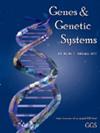S100A9和SOCS3作为急性心肌梗死的诊断性生物标志物及其与免疫浸润的关系
IF 1.2
4区 生物学
Q4 BIOCHEMISTRY & MOLECULAR BIOLOGY
引用次数: 1
摘要
急性心肌梗死(AMI)是全球死亡的主要原因之一,死亡率超过20%。然而,当前临床实践中经常使用的诊断生物标志物在敏感性和特异性方面都有局限性,可能导致诊断延迟。本研究旨在确定AMI的潜在诊断生物标志物,并探讨其可能的机制。从基因表达综合数据库中检索数据集。首先,我们鉴定了差异表达基因(DEG)和保留的模块,并通过LASSO(最小绝对收缩和选择算子)回归和SVM-RFE(支持向量机递归特征消除)算法从中鉴定了候选基因。随后,我们使用ROC(受体操作特征)分析来评估候选基因的诊断准确性。此后,进行功能富集分析和免疫浸润分析。最后,我们评估了生物标志物与生物学过程、浸润细胞、临床特征、组织和时间点之间的关系。我们鉴定了9个含有1016个DEG的保存模块,并成功构建了一个高准确度的诊断模型(GSE48060:AUC=0.923;GSE66360:AUC=0.0973),该模型包含两个名为S100A9和SOCS3的基因。功能分析揭示了炎症的关键作用;免疫浸润分析表明,8种细胞类型(单核细胞、上皮细胞、中性粒细胞、CD8+T细胞、Th2细胞、NK细胞、NKT细胞和血小板)可能参与AMI。此外,我们观察到S100A9和SOCS3与炎症、可变浸润细胞、患者的临床特征、采样组织和采样时间点相关。总之,我们建议S100A9和SOCS3作为AMI的诊断生物标志物,并发现它们与炎症、浸润的免疫细胞和其他因素有关。本文章由计算机程序翻译,如有差异,请以英文原文为准。
S100A9 and SOCS3 as diagnostic biomarkers of acute myocardial infarction and their association with immune infiltration.
Acute myocardial infarction (AMI) is one of the leading causes of death globally, with a mortality rate of over 20%. However, the diagnostic biomarkers frequently used in current clinical practice have limitations in both sensitivity and specificity, likely resulting in delayed diagnosis. This study aimed to identify potential diagnostic biomarkers for AMI and explored the possible mechanisms involved. Datasets were retrieved from the Gene Expression Omnibus. First, we identified differentially expressed genes (DEGs) and preserved modules, from which we identified candidate genes by LASSO (least absolute shrinkage and selection operator) regression and the SVM-RFE (support vector machine-recursive feature elimination) algorithm. Subsequently, we used ROC (receiver operating characteristic) analysis to evaluate the diagnostic accuracy of the candidate genes. Thereafter, functional enrichment analysis and an analysis of immune infiltration were implemented. Finally, we assessed the association between biomarkers and biological processes, infiltrated cells, clinical traits, tissues and time points. We identified nine preserved modules containing 1,016 DEGs and managed to construct a diagnostic model with high accuracy (GSE48060: AUC = 0.923; GSE66360: AUC = 0.973) incorporating two genes named S100A9 and SOCS3. Functional analysis revealed the pivotal role of inflammation; immune infiltration analysis indicated that eight cell types (monocytes, epithelial cells, neutrophils, CD8+ T cells, Th2 cells, NK cells, NKT cells and platelets) were likely involved in AMI. Furthermore, we observed that S100A9 and SOCS3 were correlated with inflammation, variably infiltrated cells, clinical traits of patients, sampling tissues and sampling time points. In conclusion, we suggested S100A9 and SOCS3 as diagnostic biomarkers of AMI and discovered their association with inflammation, infiltrated immune cells and other factors.
求助全文
通过发布文献求助,成功后即可免费获取论文全文。
去求助
来源期刊

Genes & genetic systems
生物-生化与分子生物学
CiteScore
1.50
自引率
0.00%
发文量
22
审稿时长
>12 weeks
期刊介绍:
Genes & Genetic Systems , formerly the Japanese Journal of Genetics ,
is published bimonthly by the Genetics Society of Japan.
 求助内容:
求助内容: 应助结果提醒方式:
应助结果提醒方式:


